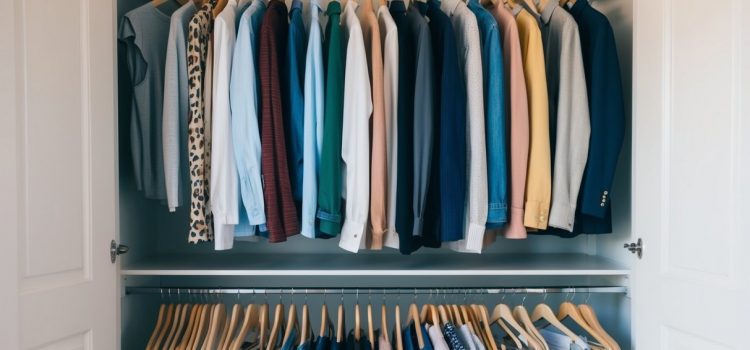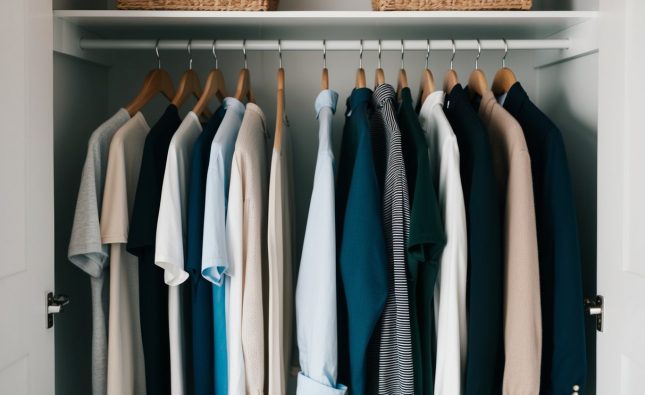
Building a stylish wardrobe on a budget is entirely achievable with the right approach. Many people mistakenly believe that fashionable outfits require significant spending, but that’s not the case. By focusing on quality over quantity and incorporating versatile pieces, anyone can create a chic wardrobe without breaking the bank.

Strategic shopping and a keen eye for sales can transform even the most modest budget into a treasure trove of stylish options. Thrift shops, online outlets, and seasonal sales offer plenty of opportunities to find unique items at reduced prices. With creativity and resourcefulness, fashion enthusiasts can curate a collection that reflects their personal style.
Planning and prioritizing key wardrobe essentials is essential. Basic pieces such as tailored blazers, classic jeans, and timeless dresses serve as a foundation that can be easily accessorized. This method allows for a polished look while maintaining financial sensibility.
Establishing Your Budget
Establishing a budget is crucial to building a stylish wardrobe without overspending. Knowing how much to allocate and where to focus expenditures will lead to effective wardrobe management.
Calculating Your Starting Budget
To determine a starting budget, an individual should first assess their monthly income and expenses. This includes fixed costs such as rent and utilities, as well as variable expenses like groceries and entertainment.
It is advisable to allocate a specific percentage of discretionary income for clothing. A common recommendation is to set aside 5-10% of monthly earnings for wardrobe development. For example, if the monthly income is $3,000, a budget of $150 to $300 can be established for clothing.
Tracking spending habits can help identify areas to adjust. This may involve cutting back on non-essential items like dining out or subscriptions to free up funds for clothing.
Allocating Funds Wisely
Deciding how to allocate the budget effectively involves prioritizing needs versus wants. A list can help categorize clothing items into essentials and luxury items.
Essentials may include basic items such as:
- Quality jeans
- Versatile tops
- Suitable outerwear
Luxury items might be statement pieces like designer shoes or trendy accessories. Setting limits on how much to spend on luxury items will prevent overspending.
It might be useful to explore thrift stores, sales, and discount websites. This approach allows one to maximize the wardrobe potential within the established budget.
Defining Your Style
Defining personal style is crucial for building a stylish wardrobe within budget constraints. It involves evaluating current trends and integrating personal preferences to create a unique look that feels authentic.
Assessing Current Trends
Recognizing current fashion trends can help individuals refine their style. By following fashion blogs, social media influencers, and runway shows, one can identify popular colors, fabrics, and silhouettes.
Key Tips:
- List Trends: Create a list of four to five trends that resonate.
- Visual Inspiration: Use platforms like Pinterest to compile outfit inspirations.
- Balance: Mix trendy elements with classic pieces for longevity.
This approach ensures that while incorporating trends, they remain relevant and personal, preventing overspending on fleeting styles.
Incorporating Personal Preferences
Personal style should reflect individuality and comfort. Taking time to understand what styles resonate can lead to more satisfying wardrobe choices.
Action Steps:
- Wardrobe Audit: Assess existing clothing to identify favorites and gaps.
- Style Icons: Identify a few style icons and seek inspiration from their outfits.
- Fabric and Fit: Focus on preferred fabrics and fits that make one feel confident.
This process fosters a wardrobe that is not only stylish but also uniquely theirs, allowing for confident self-expression while keeping costs manageable.
Smart Shopping Strategies

Building a stylish wardrobe on a budget requires strategic thinking. By focusing on quality, timing, and alternative sources, individuals can make informed choices that enhance their style without overspending.
Finding Quality for Less
To find quality items at lower prices, shoppers should learn how to identify well-made clothing. Fabrics like cotton, wool, and linen generally indicate durability. Examining stitching can also provide clues; tight and even stitches often signal better craftsmanship.
Shopping during clearance events can yield discounted quality pieces. High-street brands frequently refresh their inventory, so last season’s items often go on sale. Utilizing apps that track price drops can help individuals spot when their desired items become more affordable.
Additionally, researching brands known for quality can guide purchasing decisions. Brands committed to sustainability and ethical practices often offer durable products worth the investment.
Timing Purchases with Sales
Timing is essential for budget-friendly shopping. Significant sales events such as Black Friday, end-of-season clearances, and holiday sales can offer steep discounts.
To maximize savings, consumers should create a calendar of anticipated sales. Many retailers provide advance notices of upcoming promotions via email or social media, making it easier to plan purchases.
Signing up for loyalty programs can also provide access to exclusive discounts. Retailers frequently reward loyal customers with early notifications about sales and special offers.
Lastly, waiting for major holidays, like Memorial Day or Labor Day, can lead to significant markdowns on clothing essentials.
Utilizing Secondhand Options
Secondhand shopping offers a wealth of stylish opportunities at reduced prices. Thrift stores, consignment shops, and online marketplaces provide access to unique clothing items and brands often priced well below retail.
When shopping secondhand, individuals should prioritize items that are in excellent condition. Checking for signs of wear, such as stains or fraying, ensures the purchases will last.
To maximize finds, shoppers can visit stores frequently, as inventory changes regularly. Online platforms enable searching for specific items, making it easier to find particular styles or sizes.
Networking with friends and family about clothing swaps can also lead to fresh options without spending money. Embracing secondhand provides both savings and the chance to curate a distinctive wardrobe.
Maintaining Your Wardrobe
Maintaining a wardrobe requires attention to care and proper storage techniques. Regular maintenance helps garments last longer, while seasonal storage keeps them in good condition.
Regular Care and Repair
To keep clothing looking fresh, regular care is essential. This includes cleaning items according to their care labels, using appropriate temperature settings for washing and drying.
Tips for Regular Care:
- Inspect Regularly: Check for stains or wear and address them promptly to prevent further damage.
- Wash Wisely: Use cold water and gentle cycles to preserve fabric quality.
- Store Properly: Utilize hangers for delicate items and fold heavier garments to maintain their shape.
Repairing minor issues can significantly extend a garment’s life. Simple fixes such as sewing buttons or patching small holes can often be done at home with basic supplies.
Seasonal Rotation and Storage
Seasonal rotation helps maintain the wardrobe’s organization and condition. When seasons change, it’s beneficial to swap out winter clothes for summer pieces and vice versa.
Storage Solutions:
- Storage Bins: Use breathable bins to protect against dust and pests.
- Vacuum-Sealed Bags: For off-season items, these can minimize space and protect fabrics.
- Labeling: Clearly label bins for easy access and efficient organization.
When items are not in regular use, ensure they are cleaned before storage to prevent mold and odors. This prevents the clothes from deteriorating during the off-season and makes everything easier to navigate when the time comes to switch back.












